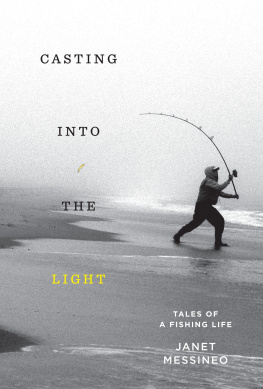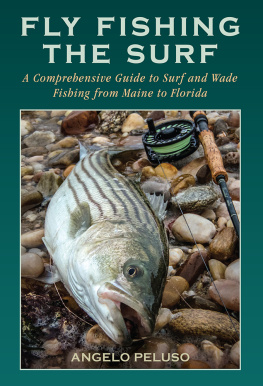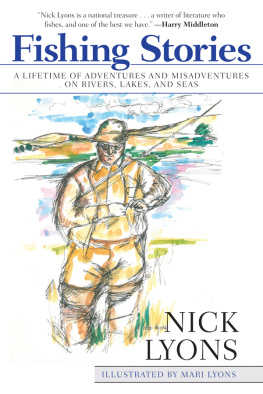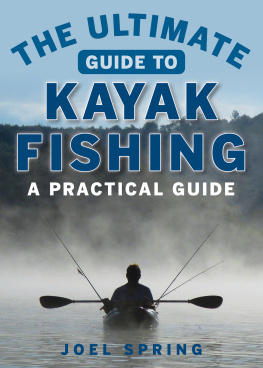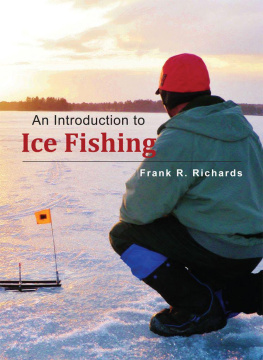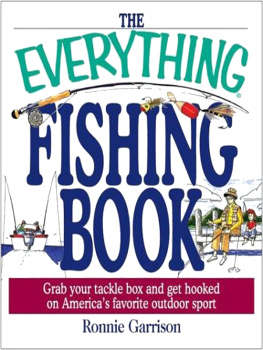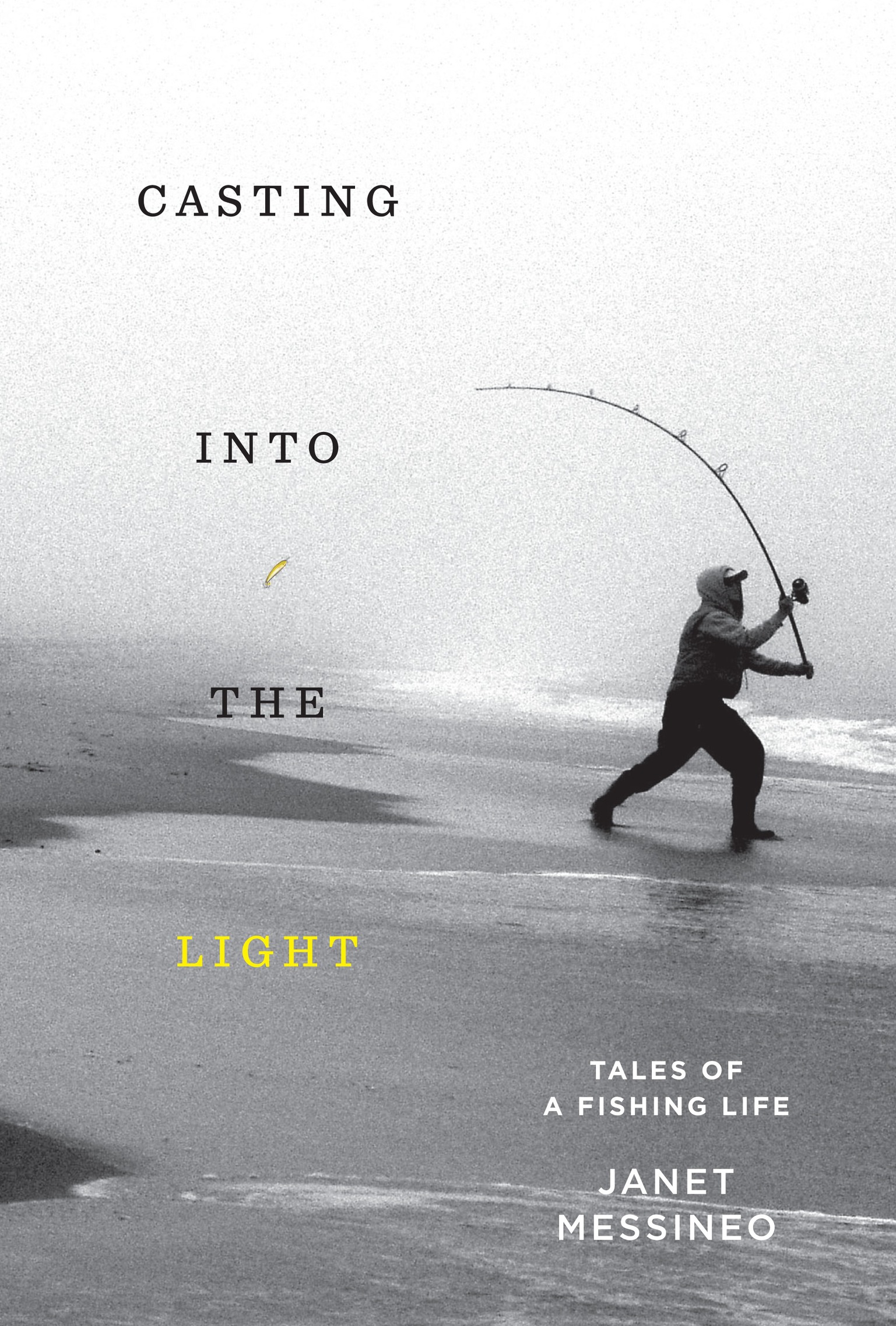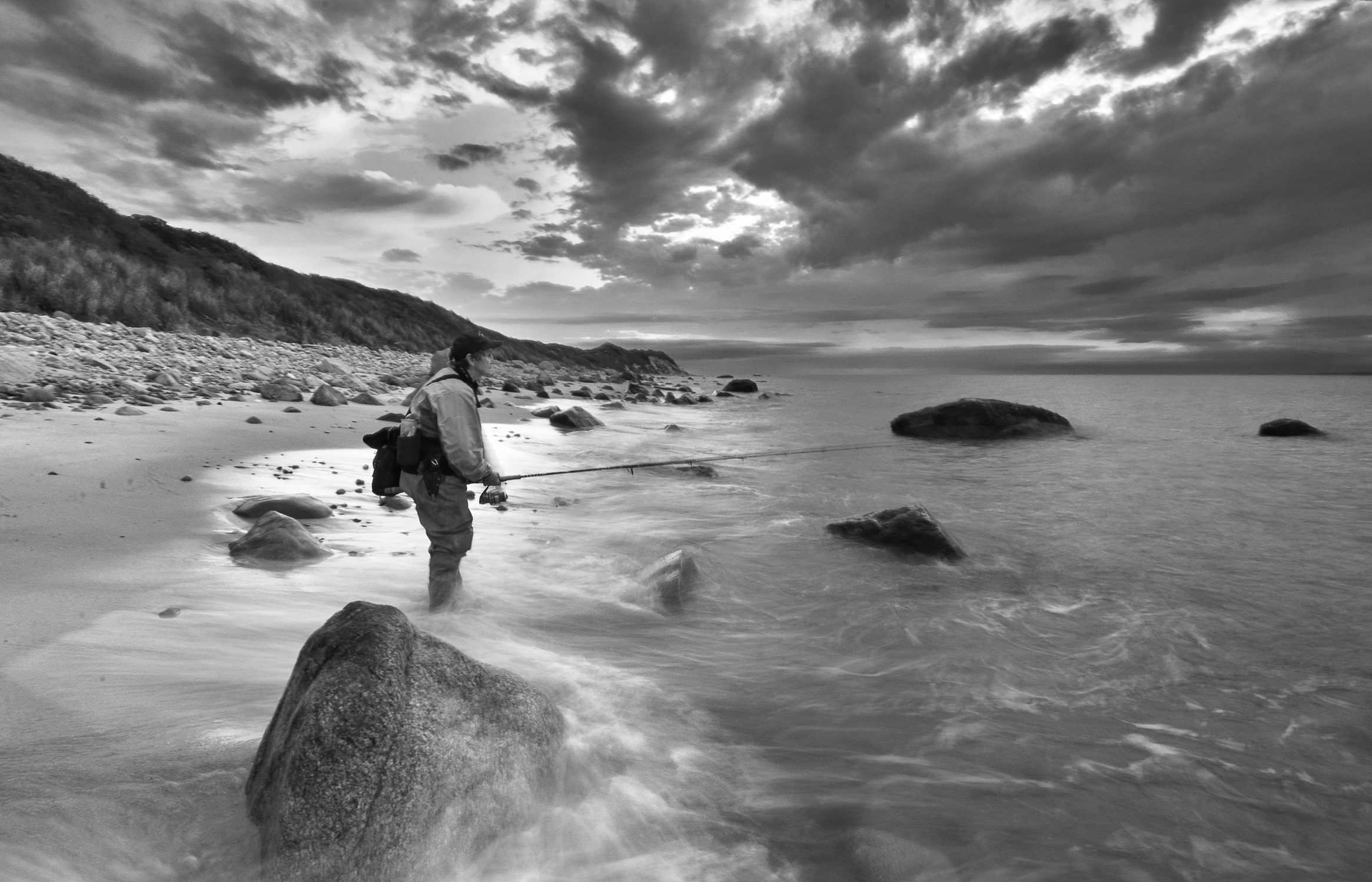Alone, in the darkness, the hunt for a trophy striped bass keeps me awake during the hours when I should be home tucked safely in my warm bed.
As the years have passed, Ive realized that fishing is not all about keeping every fish that I catch. Fishing for this beautiful creature has taught me a profound respect for all of nature. Ive observed the striped bass go into decline and have learned that nothing is inexhaustible. I now do my part in conserving the fish I once longed to possess. Many times after Ive landed a striped bass, I pause to admire its magnificent beauty, then I release it back into the surf and wish it well as it swims off to live another day.
The Hook
STRIPED BASS, Morone saxatilis, are the most prized migratory game fish in the Northeast. They have earned respect from anglers because of their powerful fighting strength, beauty, and deliciousness as table fare. They can live for at least forty years and have been known to weigh up to one hundred pounds, although fish more than fifty pounds are scarce. They can grow to more than fifty inches in length. They have a massive strong head and their sides are silver with seven dark longitudinal lines including the lateral line. The striped bass spends most of its adult life in the ocean, migrating north and south seasonally. It ascends to freshwater in the estuaries to spawn in the spring. The juveniles remain in freshwater for a few years before entering the ocean to begin their lifelong annual migration.
In New England, the striped bass has been a valued resource since the region was first settled in the 1600s. The early settlers described the bass as being in immense abundance. One of the first public schools in America was established in Plymouth Colony in 1670 with income from the striped bass fisheries. Today in New England this species is still a highly valued resource.
Pilots Landing, Aquinnah, 2014
On Marthas Vineyard, the saltwater fishing season starts in April and runs through November. When the water temperature drops to below forty-five degrees, the striped bass migrate south, following their forage to warmer waters. When the spring water temperatures rise above fifty-five degrees, they return to Vineyard waters.
I enjoy fishing for many species, but striped bass are the fish that first captivated my interest, especially because they are so difficult to find since they are primarily nocturnal feeders. They have a reputation of being finicky and clever fighters. Under the cover of darkness, they will trap bait up against jetties or in between fields of large boulders near the shoreline. Once hooked, they have been known to rub their mouths against the rocks to cut your line. A bluefish is more likely to feed during the daylight hours and in open waters. Bluefish ferociously shake their heads and jump into the air trying to free themselves from a hook. They give the fisherman a hearty tussle; they feel more like fighting a fish of muscle, but not much brain.
A fifty-pound striped bass from the surf has been the dream of many obsessed surf anglers for generations.
I was packing up my gear after a day of fishing for bluefish. Early that morning I had driven my 1979 International Scout from Katama Beach on Marthas Vineyard to Wasque Point on Chappaquiddick Island, over a three-mile barrier beach that connects the two islands.
A woman who looked to be about fifty years old, alone in her four-wheel-drive vehicle, stopped for a chat with one of the fishermen I was standing with at the Wasque Rip. To me, she was elderly. She told us she was heading out to Cape Poge for the night to fish for striped bass. From where we stood, Cape Poge is another seven miles of desolate beach driving on rough-cut roads through the dunes, and before the 1980s there was no beach management at night. Its a barrier beach, Cape Poge bay on one side, Nantucket Sound on the other. I stood wide-eyed.
I was impressed that all she had with her was her fishing gear, a thermos of coffee, and a sandwich. It was unusual to see any woman fishing on the beach. The idea of spending the night alone on a desolate beach in search of striped bass filled me with anxiety. A shiver of fear ran down my spine, but at the same time I felt excitement and got an adrenaline surge. At that moment, I wanted to be her.
Becoming a respected surf fisherman has been a challenge. My first memories are vague, but I remember wanting to become a great fishermannot a woman fisherman, separated by gender, but just a respected fisherman. I knew that I was as capable as any man of catching and landing a large fish. It took many years to prove to myself and to the male-dominated fishing community that I could make this come true. Ive had many scary nights alone on the beach in search of a huge creature that I longed to know. As I think back over four decades, Im not sure why I didnt give up after being frightened half out of my wits. Ive learned that giving up is not something I do.
During the off-season, from December until mid-April, I live a normal life. I work, clean the house and cook dinners, walk the dog, pay my bills, and take care of everyday business. Come April, the first time I get my fishing rod out of its winter storage and stand in the surf up to my thighs to cast, I exhale. It feels as though I have been holding my breath for the last five months. My posture changes, my face relaxes, most of the aches and pains in my body melt away. I feel serene, focused, and safe. Im home.
Its the meditative place similar to where gardeners go when they kneel in the dirt and dig their fingers in the soil. People who crochet or make quilts go to that place as they sit for hours and sew thousands of tiny stitches. Musicians get lost in the chords and notes, golfers know that place of peace when they chase a little white ball around the greens. My doctor told me that when he skis he no longer thinks of all his responsibilities and his mind becomes calm and quiet.

